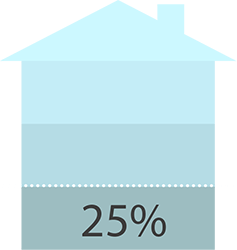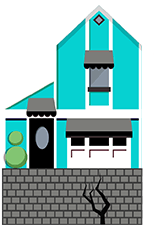
How to spot signs of
Foundation
Problems










Over 50% of these areas have underlying soils with abundant clays with high swelling potential.
Less than 50% of these areas have underlying soils with abundant clays with high swelling potential.
Over 50% of these areas have underlying soils with abundant clays with high swelling potential.
Less than 50% of these areas have underlying soils with with slight to moderate swelling potential.
These areas have underlying soils with little to no clays with swelling potential.
Data insufficient to indicate the clay content with the swelling potential of soils.